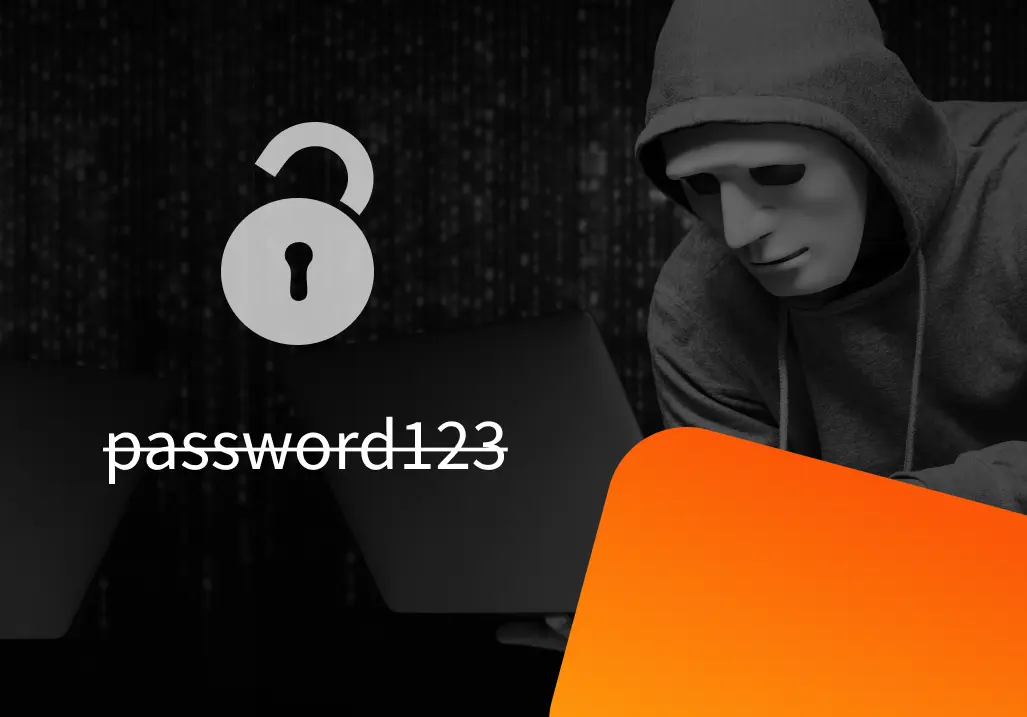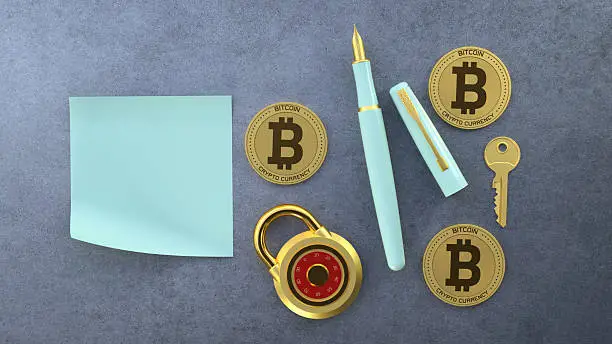
BLOG -
How-tos
Don’t get hacked: Guide to create stronger passwords
Email and password security remain critical, especially for custodial wallet users. A weak or reused password can lead to total loss of your sats, and real-world cases prove it.

BLOG -
How-tos
Email and password security remain critical, especially for custodial wallet users. A weak or reused password can lead to total loss of your sats, and real-world cases prove it.

How can you make sure your email, devices, and accounts don’t become the weakest link in your Bitcoin security?
If you're using Blink Wallet or any other custodial Bitcoin wallet that signs you in via email, this one’s for you.
Let’s be honest: most people still choose weak passwords. Creating a strong password isn’t the most exciting task. So, many people just go with something easy to remember, like ‘nameofdog123’ or ‘birthyear1995’. But in a world where hacks, phishing, and data leaks are increasingly common, your password is your first line of defense, especially when Bitcoin is on the line.
Before we begin, I’d like to acknowledge Andrej, who originally shared the idea that inspired this article. Appreciate the inspiration.
Here’s what most people don’t realize:
If you are using your email to sign in to your Blink account, your password and email security still play a critical role.
Hackers don’t always try to break into your Bitcoin wallet directly. More often, they target your email or cloud accounts, because once they’re in, they can:
In this article, we will be covering what you need to know and how to stay safe. Let’s break this down and walk you through how you secure your wallet properly.

How you log in to your Bitcoin wallet says a lot about how your Bitcoin is stored, and how secure it is.
Some wallets let you sign in with just an email. Others give you a recovery phrase, putting full responsibility in your hands.
Let’s break down the key difference:
In custodial wallets, one weak password is all it takes for someone to drain your sats.
This is not just theory; people lose Bitcoin sometimes to short, reused, or predictable passwords.

Whether you're using Blink or any other Bitcoin wallet, your first and strongest line of defense is a long, complex, unique, and secure password.
Now that we’re clear on that, let’s talk about how to build one that holds up under attack.

Your email is often the weakest point in your Bitcoin security.
Most Bitcoin wallets are well-built, but users still lose sats every day — not because the wallet failed, but because their email or password was too easy to compromise.
With custodial wallets that use email for login, your email password becomes the key to your wallet.
If someone gains access to your email, they could:
Bitcoin is powerful because you control it directly. But that also means you're 100% responsible for protecting it, and no customer support can reverse a Bitcoin transaction. Once it’s sent, it’s gone.
And unfortunately, hackers don’t guess. They use automated tools that can try millions of password combinations per second.
When sats are at stake, the time to upgrade your password is now.

Many people choose passwords that are easy to remember, and just as easy to guess. But with Bitcoin, that’s a risky habit.
How to Create a Strong Password
Weak passwords often come from habit, fear of forgetting, or not knowing the risks. But with Bitcoin, one weak password could cost you everything
Here’s how to build one that holds up, even if someone’s trying to break in with tools.
1. Use at least 12 characters
The longer the password, the stronger it is.
Aim for 12–16 characters minimum; each extra character increases strength exponentially.
2. Mix letters, numbers, and symbols
Don’t use actual words. Combine:
Example: L9!wzrX#k28vQ
3. Avoid personal information
Don’t use names, birthdays, or common words tied to your identity — especially if you're active online.
Bad examples: Luna201, Lakers24, Blessing1234
4. Try the passphrase method
Create a short phrase that only you know, then add random digits or symbols to replace some of the words or letters. This makes it both memorable and secure.
Example: “My dog Luna barks at 3 am every Tuesday morning!”
→ MdL*nab@3AmeT!m (Strong and memorable)
5. Use a password manager
Password managers generate and store secure, complex passwords for you. Recommended options:
Just remember one master password, and the rest stay safely encrypted. If you prefer not to use an app, write it down and store it securely offline (never in your phone’s notes or inbox).

With Bitcoin, there’s no “forgot password” safety net. If someone gets access to your custodial wallet, especially one tied to your email, your sats can be stolen with no way to recover them.
Here are real-world cases where weak, reused, or lost passwords led to devastating losses:
1. Trezor iCloud Hack – $17K+ Lost
Hackers phished the user’s Apple ID, accessed iCloud, and stole their recovery seed from a backup file, draining their hardware wallet. Weak Apple password or no 2FA was the entry point. Read more on Reddit
2. 3 Wallets Drained – Password Reuse or Malware
A crypto user lost access to MetaMask, Trust Wallet, and Binance accounts. Suspected causes: reused passwords and possible device compromise. Full story on Medium
3. 16 Billion Passwords Leaked Online
A massive data dump of leaked passwords from past breaches is fueling crypto thefts. If you reused an old password, hackers can easily test it on your email or wallet. Report via DeepStrike
Takeaway: Whether custodial or self-custodial, your password is your first line of defense. Hackers rely on automation and leaked data to find weak spots. This isn’t fear, it’s about ownership and responsibility. Use strong, unique passwords, secure your email, enable 2FA, and protect your sats.

If you sign in to Blink Wallet using your email, your Bitcoin is only as secure as your email account. That means:
What You Should Do Right Now

Your email is the gateway to your Bitcoin, especially if you use any custodial wallet that logs in via email.
Before you trust your email password, test it using these free tools:
These tools analyze how long it would take to crack your password and whether it’s appeared in known breaches.
The Passwords Hackers Try First
According to NordPass (based on 2.5 TB of leaked password data), the most common, and dangerous, passwords are still:
123456 – used in over 3 million leaked records
password – the second most frequent.
Other predictable options like qwerty, admin, iloveyou, or abc123 show up constantly and are cracked in seconds.
Trusted sources confirm this trend:
Hackers don’t guess; they automate attacks using these leaked password lists. If you're using any of them, even temporarily, you're putting your Bitcoin at serious risk.
Even if you use a password manager for your wallet, a weak email password can still compromise everything. Your email is the front door to your Bitcoin; lock it down with a strong, unique password and 2FA.
Myth: Changing your password monthly keeps you safe.
Truth: One strong password is better; only change it if it’s compromised.
Myth: Writing it down is unsafe.
Truth: It’s safer than reusing weak passwords, just store it securely offline.
Myth: Adding ‘123’ or ‘@’ makes a password strong.
Truth: Predictable patterns are easy to crack; use random characters and longer passwords.
Myth: Screenshots are a good backup.
Truth: Screenshots are risky—use a trusted password manager or store it offline securely.

Blink Wallet supports 2FA; you can enable it anytime from the Settings tab. Be sure to also turn on 2FA for your email, financial apps, and any accounts tied to your identity.
What to Do if You Suspect a Breach
Act fast if something seems off:

Your password is the foundation of your Bitcoin security, especially if you're using Blink Wallet with email login. There’s no reset button in Bitcoin. If your satoshis are stolen, they’re gone for good.
So take a few minutes now to:
You’ll sleep better knowing your sats are safer, because your Bitcoin is only as secure as your weakest password, and it shouldn’t be something like nameofdog123.
Start receiving and sending bitcoin now